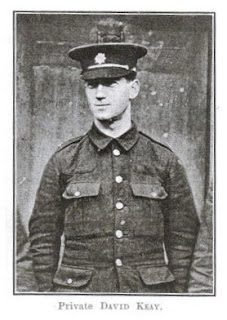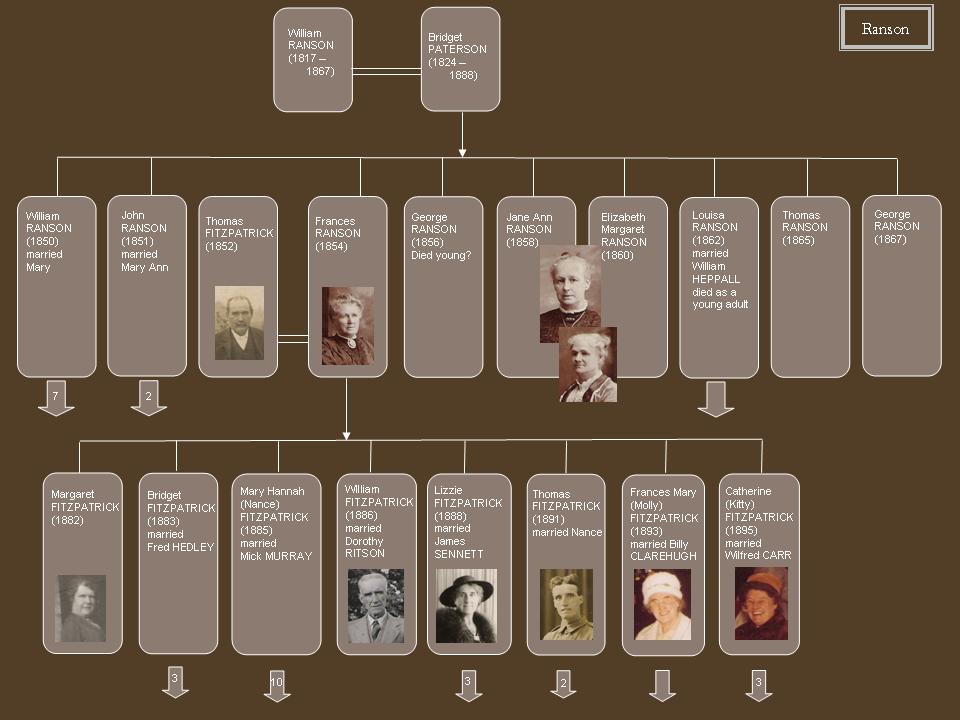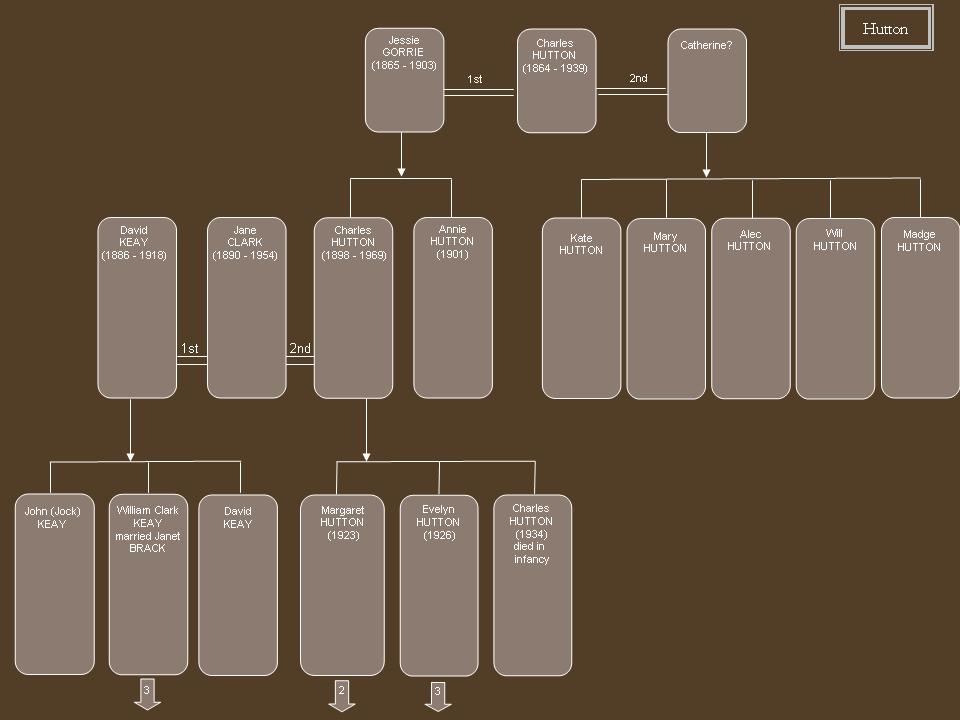 {You may notice that this image's quality has been much improved. This is great news, as it seems to be the only photograph remaining of David. Would love to hear from anyone with other photos, or indeed a photo of any of his siblings!}
{You may notice that this image's quality has been much improved. This is great news, as it seems to be the only photograph remaining of David. Would love to hear from anyone with other photos, or indeed a photo of any of his siblings!}A remembrance book of all the War Dead of Comrie (Perthshire) from the Great War has an entry for Private David Keay, my great-grandfather.
"Private David Keay, Royal Inniskilling Fusiliers, husband of Mrs Keay (nee Jane Clark), Drummond St, Comrie, was killed by a shell in France at Bailleul on 1st September, 1918. Private Keay, who was 31 years of age was a native of Perth and one of three brothers who joined the colours and sacrificed their lives for their country.
He was a baker to trade and was employed with Mr John Turnbull, baker, for five years before joining the army.
He enlisted in the Royal Army Service Corps in October 1914 and in the spring of 1915 went out to France where he was engaged at his own trade until January 1918, when he was transferred to the regiment in which he was serving at the time of his death. He was a young man of quiet disposition and superior intelligence, and much liked by all who enjoyed the pleasure of his friendship, and esteemed by the general community.
His comrades and chaplain, when writing to his widow, spoke highly of his good qualities, and expressed their regret at losing such a good soldier and friend. He left a widow and three young children to mourn his loss."
War Memorial at Comrie, Perthshire.
They shall grow not old, as we that are left grow old:
Age shall not weary them, nor the years condemn.
At the going down of the sun and in the morning
We will remember them.
They mingle not with their laughing comrades again;
They sit no more at familiar tables of home;
They have no lot in our labour of the day-time;
They sleep beyond England's foam.
Three Brothers - David Keay
Private David Keay was buried 'about 2 and a quarter miles East of Bailleul'. We know this from the original notification letter sent to his family. I have his service number now, (42804, 1st Battalion Royal Inniskilling Fuseliers) {Thanks, Elaine}. More below on where Bailleul is, and where David was laid to rest.
Of course, he is also remembered on the Cenotaph of Comrie - see the photograph above, and this site which shows the Comrie cenotaph as well as the Memorial Book. Also another page here which shows the Cenotaph in its early days.
A lovely page (click here) shows a lot of details about all the Gallant men & women of Strathearn who served in the war. It tells us that the Comrie Memorial Book was written by a McGregor - I'll look into the link. Several McGregor & McFarlane names are mentioned.
The memorial book entry tells us that David worked for John Turnbull as a baker in Comrie. The P.O. Directory of 1911 (read it here, p385) shows us there were 4 bakery businesses in Comrie. Mr John Turnbull is listed on Drummond St. The others were named Burnett, McCowan and McIntyre.
David Keay worked as a Baker with the Army Service Corps
According to the Local Memorial Book, David was a baker in the ASC for much of the war (when his number was 015379); see a site here which describes the ASC.
Here are 2 interesting photos from Richard Holmes' fascinating book "Shots from the Front" - a tough read, but lots of interest..
It shows us an Army bakery hard at work producing ration loaves (2 lb in size, meant for sharing between 3-6 men).
Is it just me, or is the baker in the centre a dead ringer for a Keay? He's the one without a moustache, looking over his shoulder at us (as usual, click to enlarge the photo or simply use CTRL and +). The photo is part of a collection at the Imperial War Museum, and is available for purchase. The helpful office told me the the IWM ref number is Q 4792. It was taken in March 1917 in Calais. There is no additional information about those in the photograph, unfortunately.
Next a photo of the bread & other rations (jam, sardines) being handed out, while the quartermaster sergeant supervises.
1918: transfer from the ASC...
David left the ASC in January 1918 and became a Regular Private (his brother William had died in 1916, and his brother John died in February 1918). Perhaps photos in the Imperial War Museum can give a clue about why he was transferred out of the ASC - more women were being employed in ASC-type work from ~1917 (search IWM for photos of women bakers using the keyword bread here). Several photos there show women working as bakers at Dieppe, in 1918 (as well as other general images of ASC bakers/ bread ovens).
...to the Royal Inniskilling Fuseliers
This site (here) gives details on the Royal Inniskilling Fuseliers regimental museum, and this (here) tells the history of the Fuseliers in WW I. In early 1918, the battalion became part of the Ulster Volunteer Force (109th Brigade of the 36th Ulster Division; click here) which was indeed involved in the Battle of Bailleul. The formation of the UVF was an interesting aspect in the history of Home Rule.
"Killed at Bailleul", September 1918
Unfortunately, there are many towns named Bailleul in France/ Flanders! (No doubt it comes from the same root as our word Bailey.)
One Bailleul is near Abbeville in the Somme, {see Wiki page - but nothing on the 1914-18 period}. Another is in the Orne region, near Alencon.
The most likely candidate is the larger Bailleul in Northern France, near Lille; right on the current border with Belgium. The ground there is very flat farming country, though Lille is pretty industrialised {link here to a map, and here to a 1918 photo of the area}. This former Belgium town was very important during WW I. It was recaptured from the Germans on August 30th (some sites say September 5th), 1918. It's recorded that David was killed on the 1st of September. {See Wikipedia for more info on the town.}
Photo on the Imperial War Museum site of Bailleul in April 1918.
You can read a contemporary news report in the New York Times: here.
A German viewpoint is seen here.
Here's a link to a new Google Map feature that I'm developing.
Gravesite confirmed
The Commonwealth Wargraves Commission (www.cwgc.org), shows us that he was buried at the military cemetery east of Bailleul (over the border in Belgium). The plot number is III.F.2, at Wulverghem-Lindenhoek Road Military Cemetery (visit this site about the cemetery, which shows a general picture).
{N.B. it took me a while to find this information, as when I searched the CWGC database I entered the full name David Keay, and he is recorded as "D. Keay". Just goes to show you should always try entering less data; you live & learn.)
The location of the cemetery would suggest that David Keay had been wounded (we read in the Comrie Memorial Book that he was killed by a shell) and brought forward to the Advance Dressing station before being moved to the Casualty Clearing Station - those who died were then buried at Wulverghem.
The original notification letter sent to his family told them that he was buried 'about 2 and a quarter miles East of Bailleul' - which is about right for the Wulverghem cemetery.
Here are two more photos which I found in Richard Holmes' fascinating book "Shots from the Front".
The first shows a 'serious' ward in a Casualty Clearing Station at Outtersteene, West of Bailleul - but in 1916, not in 1918.
Next a photo of an ambulance train which was used to evacuate the wounded back to Britain (Doullens, 1918). Triple bunk beds and a narrow central aisle.
****
Three BrothersDavid's brothers mentioned in the Remembrance book quoted above were John Keay and William Keay - they were both in the Black Watch. We can see more here about the Black Watch engagements in WW I on this page here from the Black Watch Museum.
Three Brothers - John Keay
John Keay was a Private in the 4th/5th Bn. {also was in the 6th Bn, Service No: 267178} of the Black Watch (Royal Highlanders). He died of wounds (aged 36) on 9th February 1918 in France. His grave is at Tincourt New British Cemetery, plot V.A.11. See a great view of Tincourt by clicking here.
John was perhaps a career soldier, having been in the regiment well before the war began. It seems he began his army career in 1898 with the 4th Volunteer Battalion of the Black Watch. (Boer War began in 1899 - read here about the 1st & 2nd battalions actions)
I have seen his war medals Record Card and Attestation Papers (see this blog page). I found that he was a Dyer's Labourer by trade, and had enlisted in 1908 into the 4th Bn (one of 4 Black Watch Territorial (Volunteer?) Brigades formed that year).
He then joined the 6th (Perthshire) Battalion in 1914. The Expeditionary Force went out to France/Flanders in May 1915. (Note his brother William enlisted to the same battalion and presumably they went out to France together.)
A quick note here - visit this site & you'll see a Pte John Keay (Black Watch) on the Memorial in Perth for employees of the Pullar's Dye Works. It is on Kinnoull St., a site which is now occupied by the Perth & Kinross Council Offices.
In John's enlistment papers from the year 1914 (when he was called up to be embodied in the 6th Battalion), John gives his employer as Pullar's, where he is a Dyer's Labourer (as he was in 1901). He also states that he is not an apprentice.
Three Brothers - William Keay
William Keay was a Lance Corporal in the 6th (Perthshire) Battalion, Service No: 1709 of the Black Watch (Royal Highlanders). He was killed in action (aged 28) on 30th July 1916 in High Wood of the Somme, France.
He is remembered at the huge Thiepval Memorial, Pier and Face 10 A. (No known details of his grave - he may well be in one of the many "Unknown" graves, e.g. at the London Cemetery of Longueval. A huge proportion of those who lost their lives at High Wood were not identified, and many were not even recovered.)
Summer 2009: on a journey through Northern France, we stopped at the stunning Thiepval Memorial to stretch our legs. (See a great view of the area from the top of the Tower on this site.) We found the staff there very helpful, and we did indeed find William's name inscribed clearly on Face 10A. A gorgeous sunny day on which to sit & remember their sacrifices. In the picture below left you can see how dwarfed we were by the monument, and then you can see "Keay, W" inscribed on the right. His name was in a section devoted to Lance Corporals of the Black Watch.
In addition, a Private James Keay of the Royal Scots is remembered at the Thiepval Memorial (see a post here about this James).
To have lost one member of the family was indeed a tragedy. So to have lost these three brothers, in addition to the earlier fatal accident of young James, must have been unbearably hard.
David Keay was remembered on the War Memorial at Comrie. He and his brothers John & William Keay were remembered in Perth on the Roll of Honour (The Golden Book; view page 2 of that site) kept at St. John's Kirk, Perth.
All three were also remembered by the Scottish National War Memorial at Edinburgh Castle.
The First Two Minute Silence in London (11th November 1919) as reported in the Manchester Guardian, 12th November 1919.
'The first stroke of eleven produced a magical effect.
The tram cars glided into stillness, motors ceased to cough and fume, and stopped dead, and the mighty-limbed dray horses hunched back upon their loads and stopped also, seeming to do it of their own volition.
Someone took off his hat, and with a nervous hesitancy the rest of the men bowed their heads also. Here and there an old soldier could be detected slipping unconsciously into the posture of 'attention'. An elderly woman, not far away, wiped her eyes, and the man beside her looked white and stern. Everyone stood very still ... The hush deepened. It had spread over the whole city and become so pronounced as to impress one with a sense of audibility. It was a silence which was almost pain ... And the spirit of memory brooded over it all.'
You may be interested in the BBC site set up for the 90th Remembrance Day, 2008.
A page of mine (click here to reach it) which has a poem for Remembrance Day 2009.
Here's a link to an article about Letters Home ("Somewhere in France").
Also the site of the Black Watch Museum, Perth. The "Great War Forum" has a lengthy thread on a member of the 1st Black Watch - it's notable for the quality of the photos. That soldier must have been a keen photographer! It mentions several books of interest to those who wish to read further.
And let's not forget...our Current Heroes (Help for Heroes). See this page for the current activities of the Black Watch (now 3rd Battalion of The Royal Regiment of Scotland).
Many Thanks, Lisa

















No comments:
Post a Comment